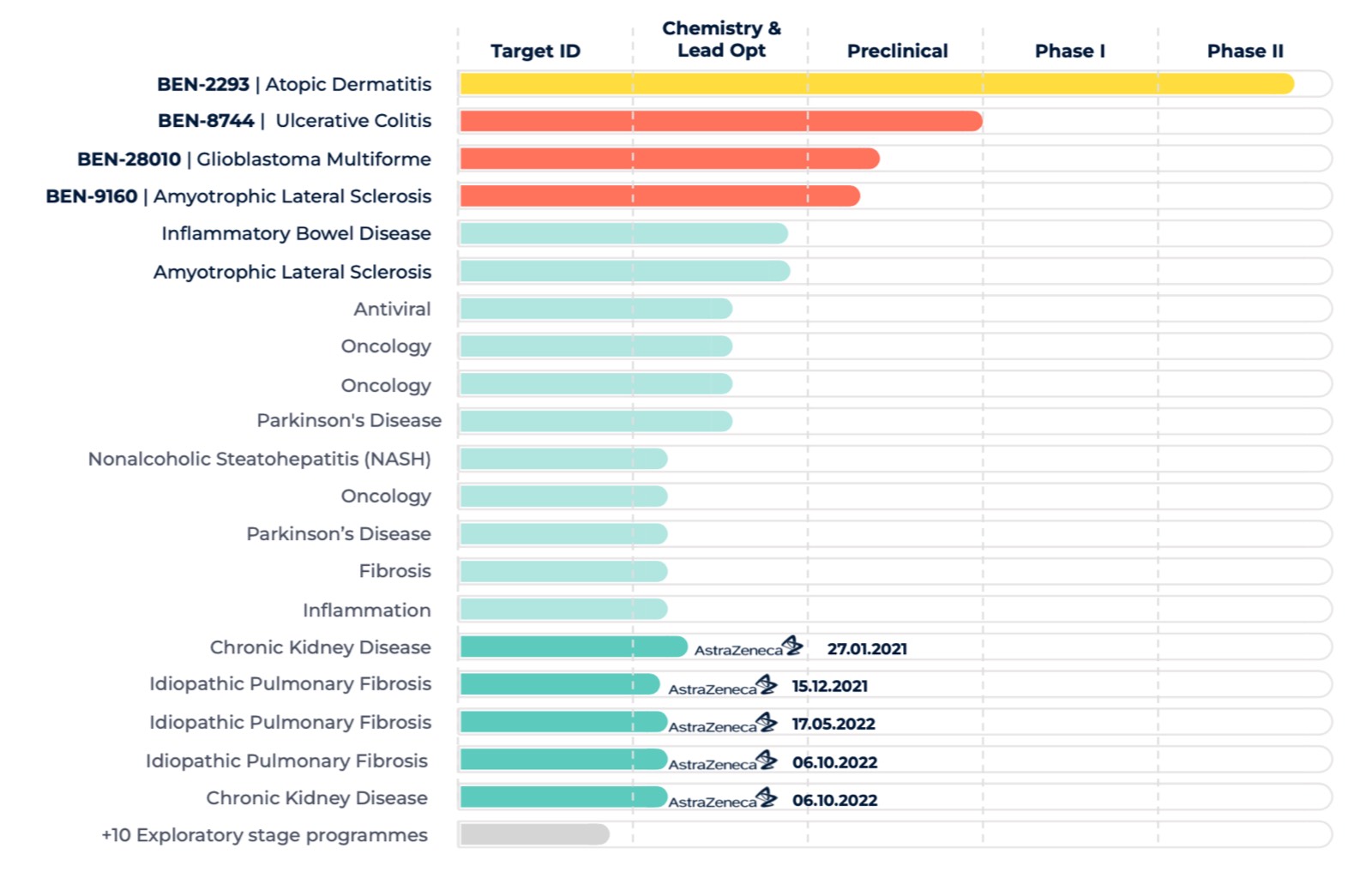Case study
Accelerating scientific decision-making in Target Triage
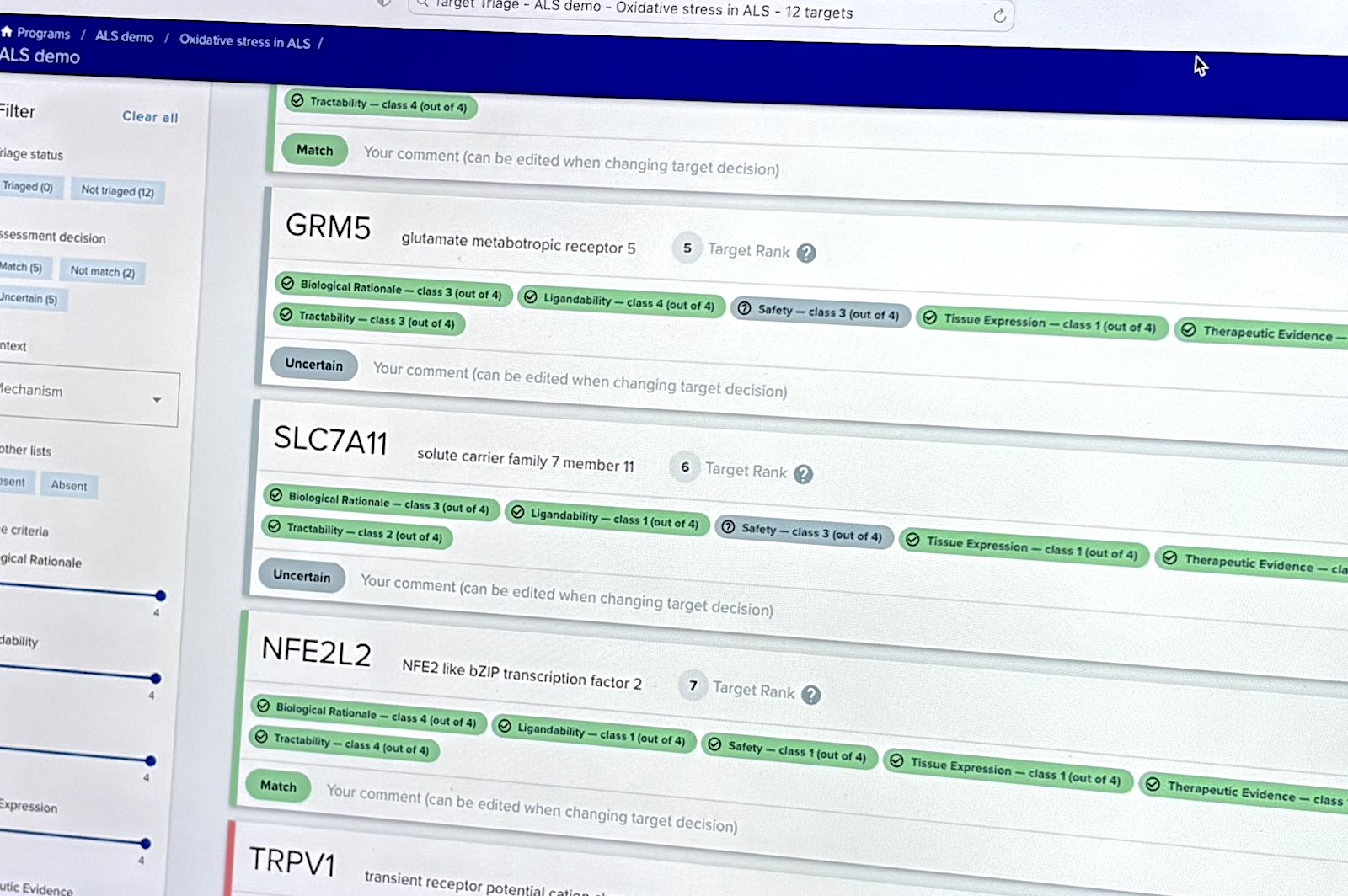
My role: Design Lead & Contributor
Project type: Enterprise tools, B2B
Company: BenevolentAI
My contributions: Design leadership, Rapid prototyping, Qualitative research, Co-design, Content design, Design system
Outcome: Accelerated drug pipeline expansion and delivery driven by higher scientific productivity
The Challenge
BenevolentAI's mission to revolutionise drug development focused on early-stage discovery where costs of failure is relatively low but impact on clinical success is high.
The company built an extensive knowledge graph capturing all biological knowledge and deployed AI models to predict novel drug hypotheses. Company scientists used it to build a pipeline of validated pre-clinical assets with better clinical prospects.
But the evaluation process of AI-predicted hypotheses called triage was too slow. Scientists spent days on triage decisions, bottlenecking discovery programmes and compromising thoroughness to meet deadlines.
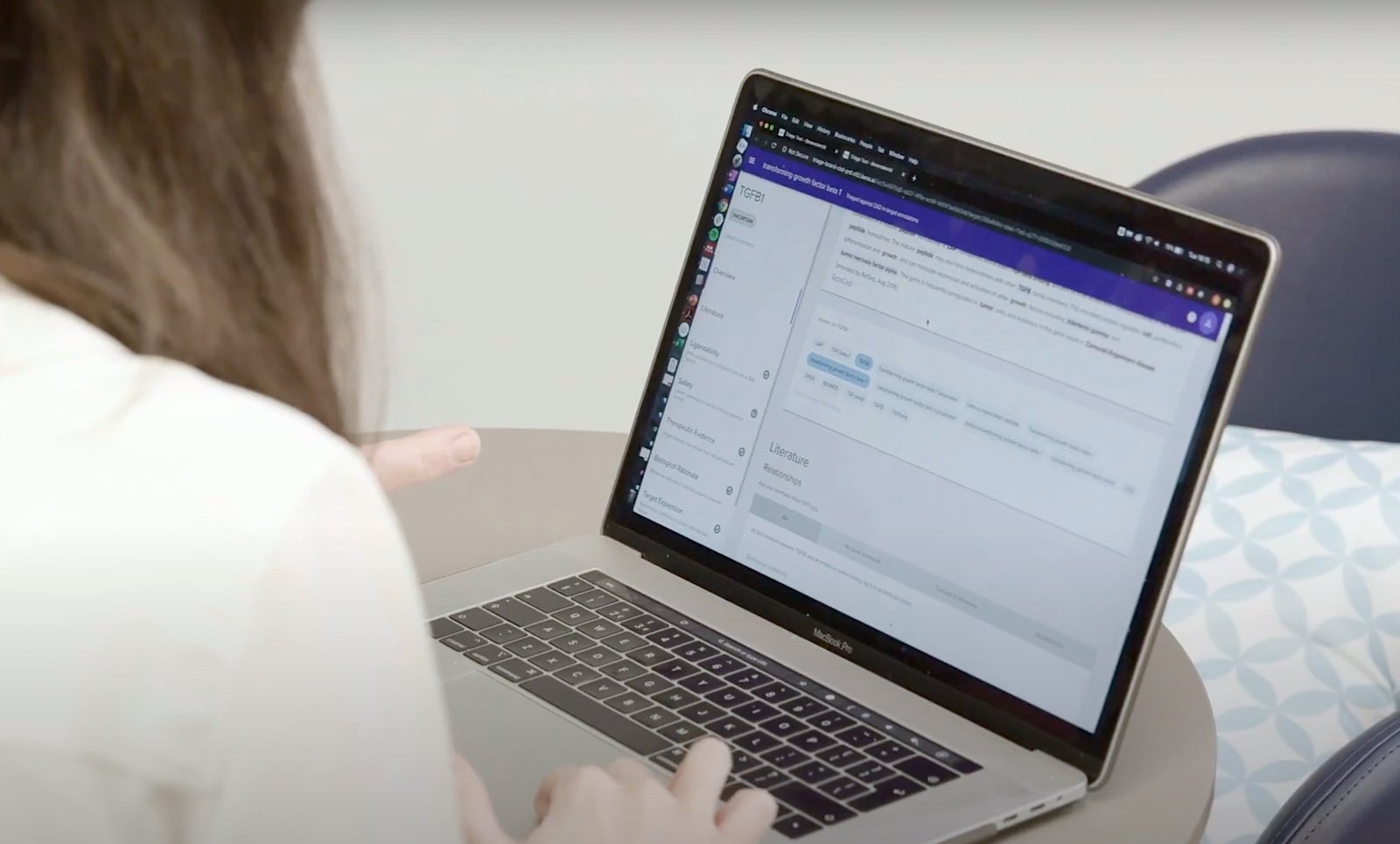
How might we accelerate target triage while improving its quality?
My Approach
When I joined, the team had a proof of concept built and tested. It was company's 8th approach to address the triage problem. Past attempts failed due to rushed execution and compromising on key user needs. Our ambition was to solve triage once and for all.
I mapped core system architecture and the end-to-end experience building on the insights from past tests and implementations. This helped me drive cross-functional conversations to decide the scope of the MVP.
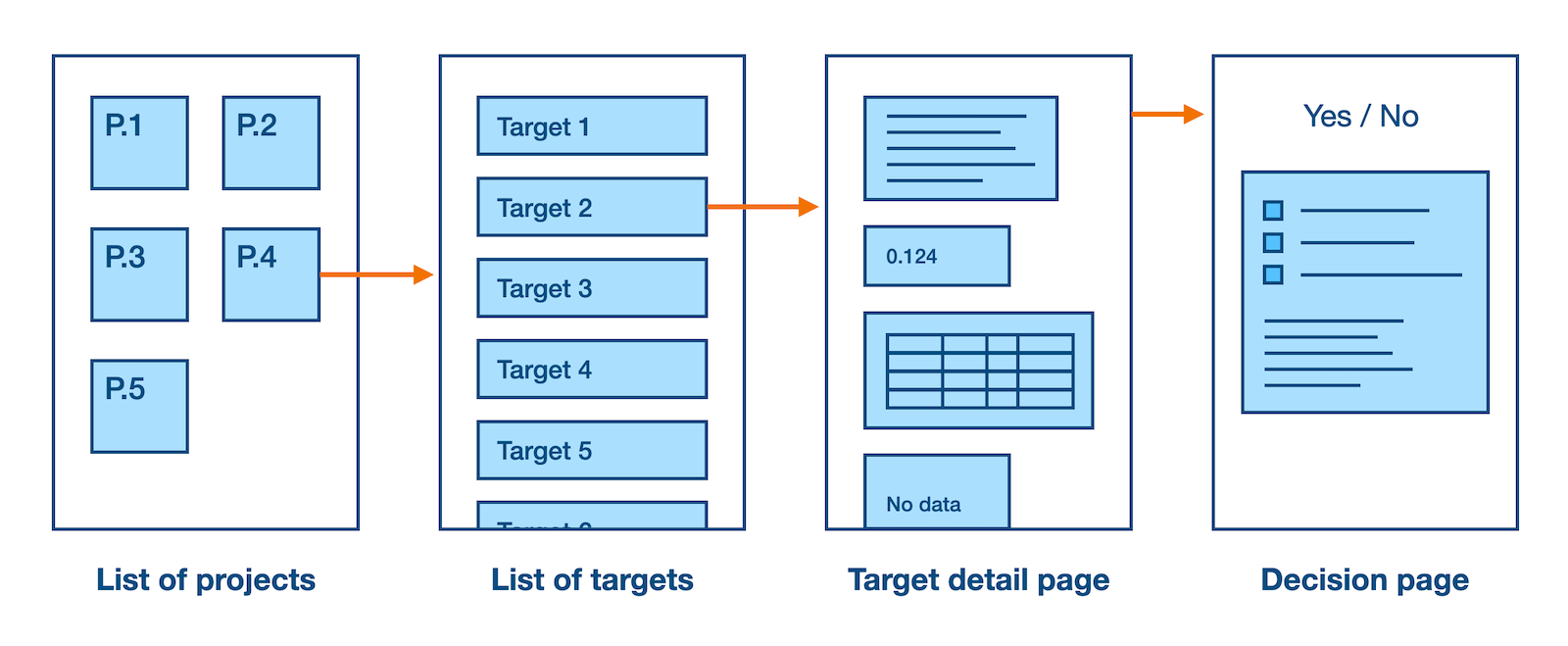
System architecture was simple.
Complexity was in ranking targets in the List of Targets, organising evidence in the Target Detail Page, and capturing human-in-the-loop feedback in the Decision Page.
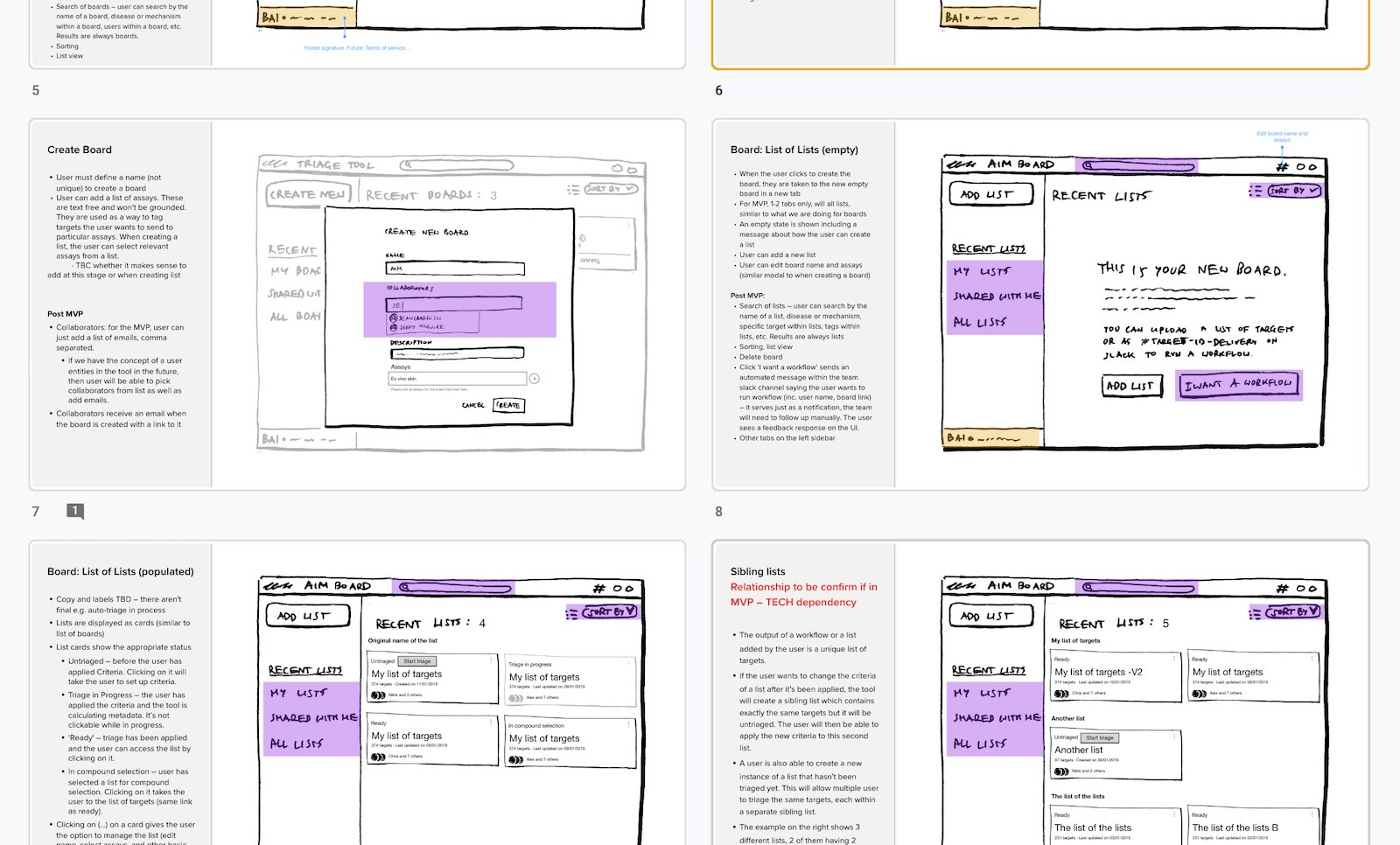
In wireframes, I used colour-coding to separate MVP scope from future plans. This let the team align on current build in the context of long-term product vision.
Parallel to development, our scientists were running drug development programmes that suffered delays due to old triage methods. This was our opportunity to apply new Target Triage to real science work, test our solutions, and deliver immediate value.
I suggested to prioritise delivering the Target Detail Page, where core triage decisions occurred. The page consolidates tens (later hundreds) of facts about each target prediction, saving users hours of manual querying across disconnected sources.
I leveraged this expedited delivery to test with users during live target triage sessions. This helped me build team's shared understanding of the target evaluation process, how users scan scientific facts, and how seniority impacts decision-making. I used the insights to guide design in subsequent iterations.
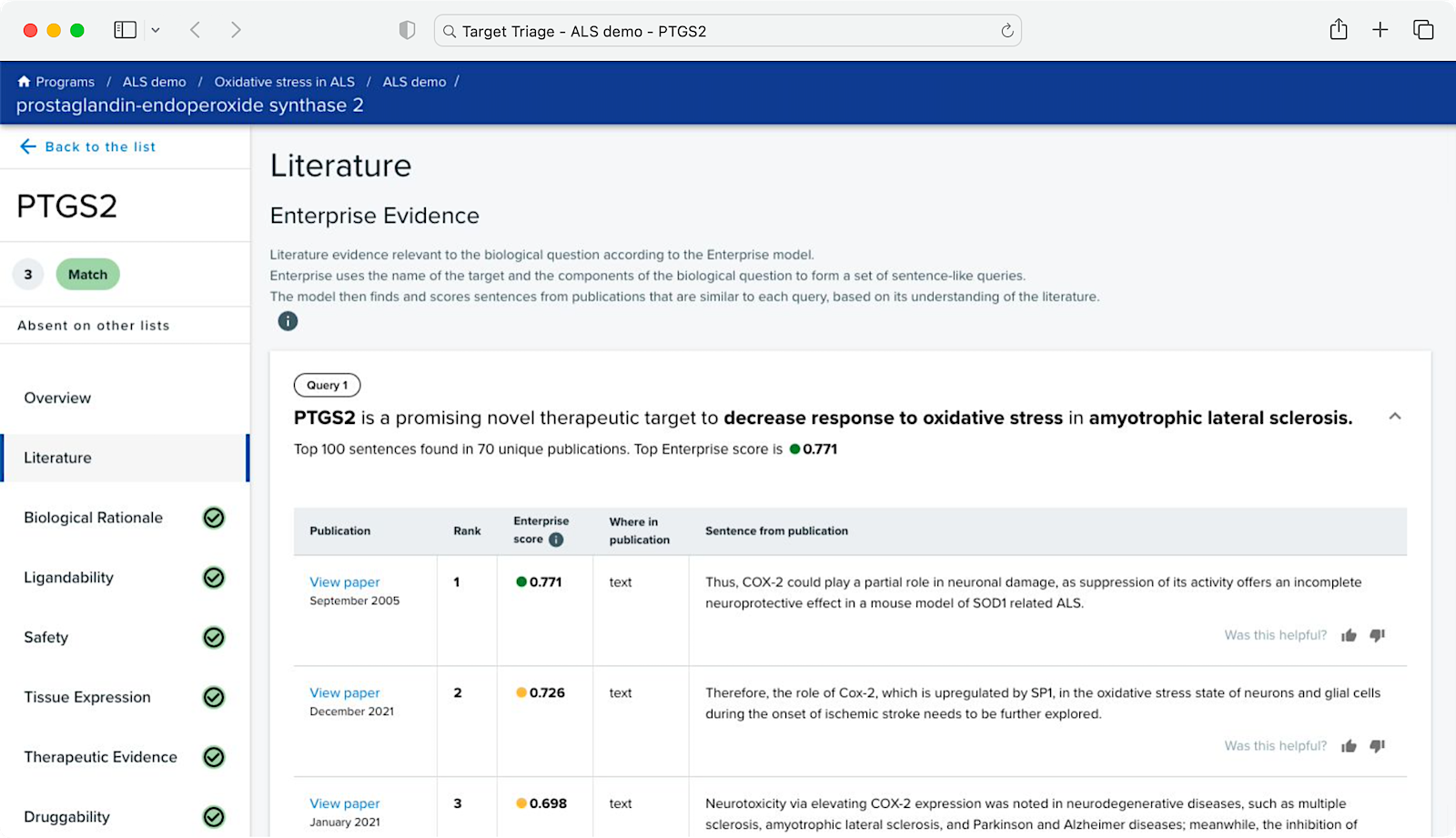
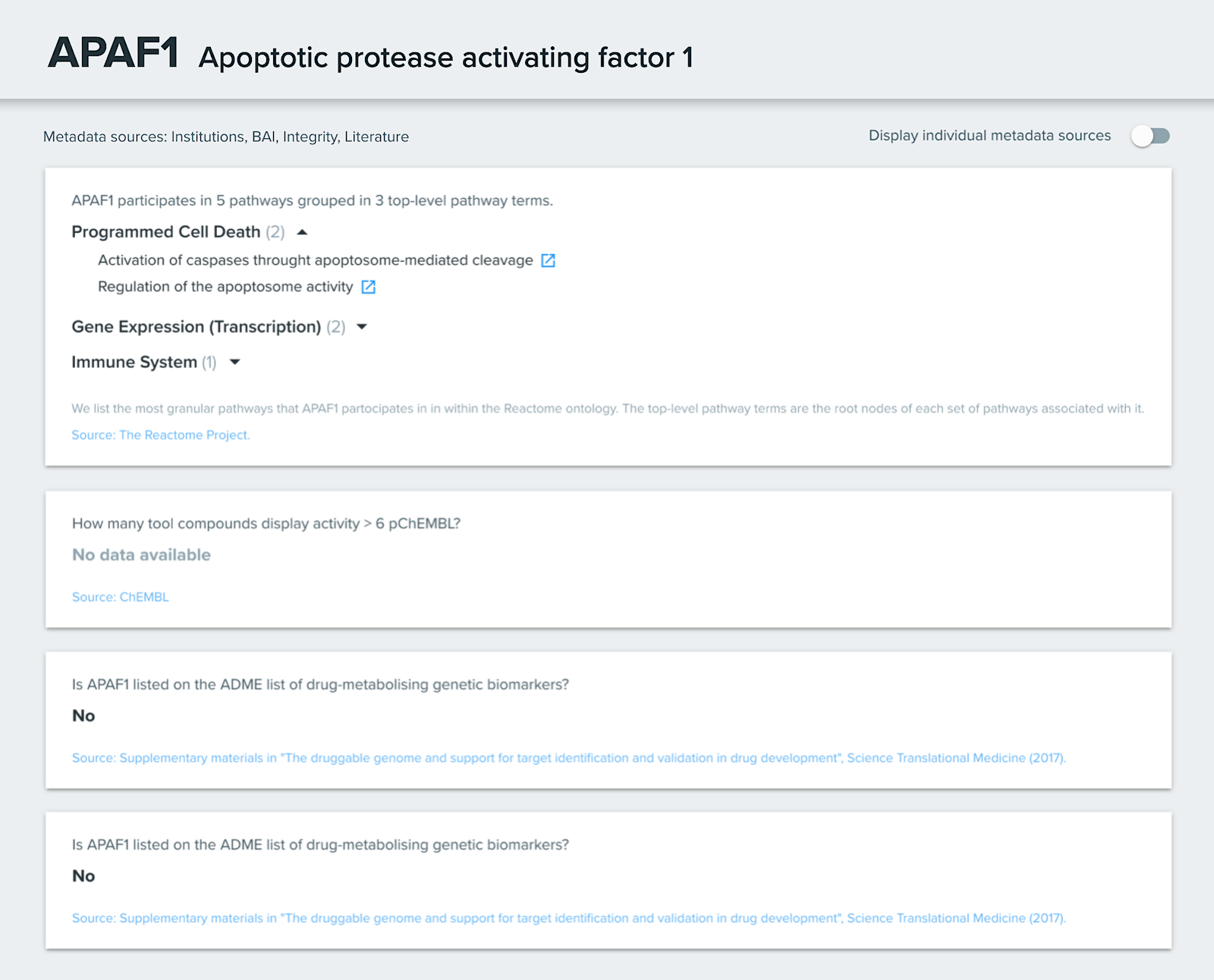
In the Target Details Page, users evaluate the biological rationale, safety, mode of action, novelty, and tractability of AI-predicted targets.
The Solution
Target Triage displays all the right data about the right target at the right time in one easy-to-use web app with an integrated decision flow. Data includes external sources (via integration), internal data (knowledge graph queries), and scientific interpretations (scoring and ranking).
Users make target triage decisions and capture structured rationale as they progress. Decision rationale plus supporting evidence (publications, experiment results) feeds back into AI models for improved predictions and builds target validation packages for portfolio entry.
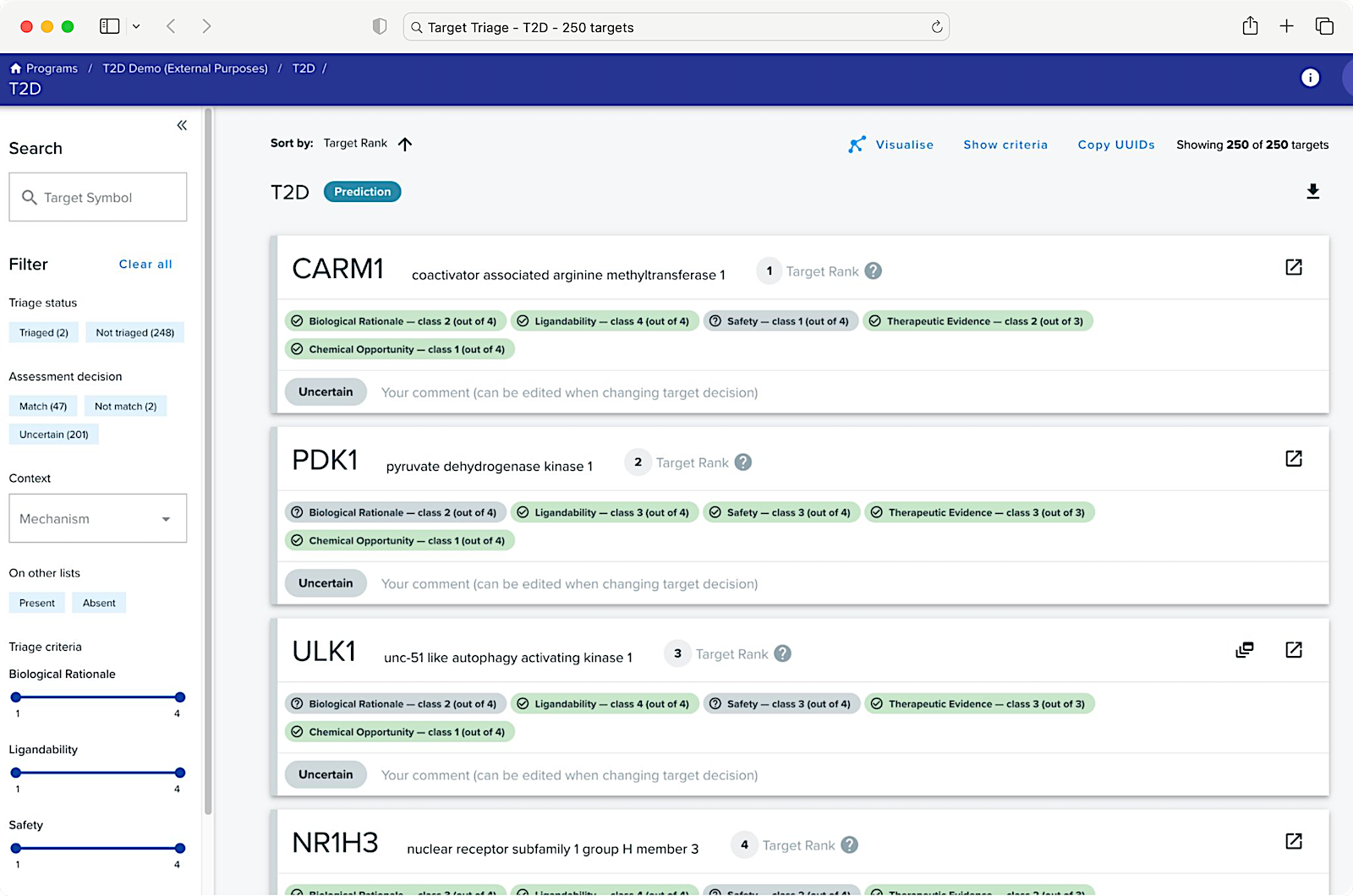
Previously we have looked at data sets in silos [...] but here we can really get an overview of all available data sets.
AstraZeneca science leader
The Result
Target Triage was my first and most transformative product at BenevolentAI. Within 2 months, it delivered value in internal drug discovery, and 2 months later in a collaboration with AstraZeneca.
Target Triage reduced decision time from hours to minutes. For complex targets, it surfaced key evidence in a single place with structured evaluation frameworks. Faster, integrated, and less biased decision-making boosted overall scientific productivity.
During 4 years of active use, Target Triage helped BenevolentAI scientists deliver a rich, diversified drug candidate pipeline including 25 internal and 5 collaboration programmes.
